A Furtive Rebellion: The Story Behind Breakout 13
Examining the cultural nuances of the intriguing FMV game
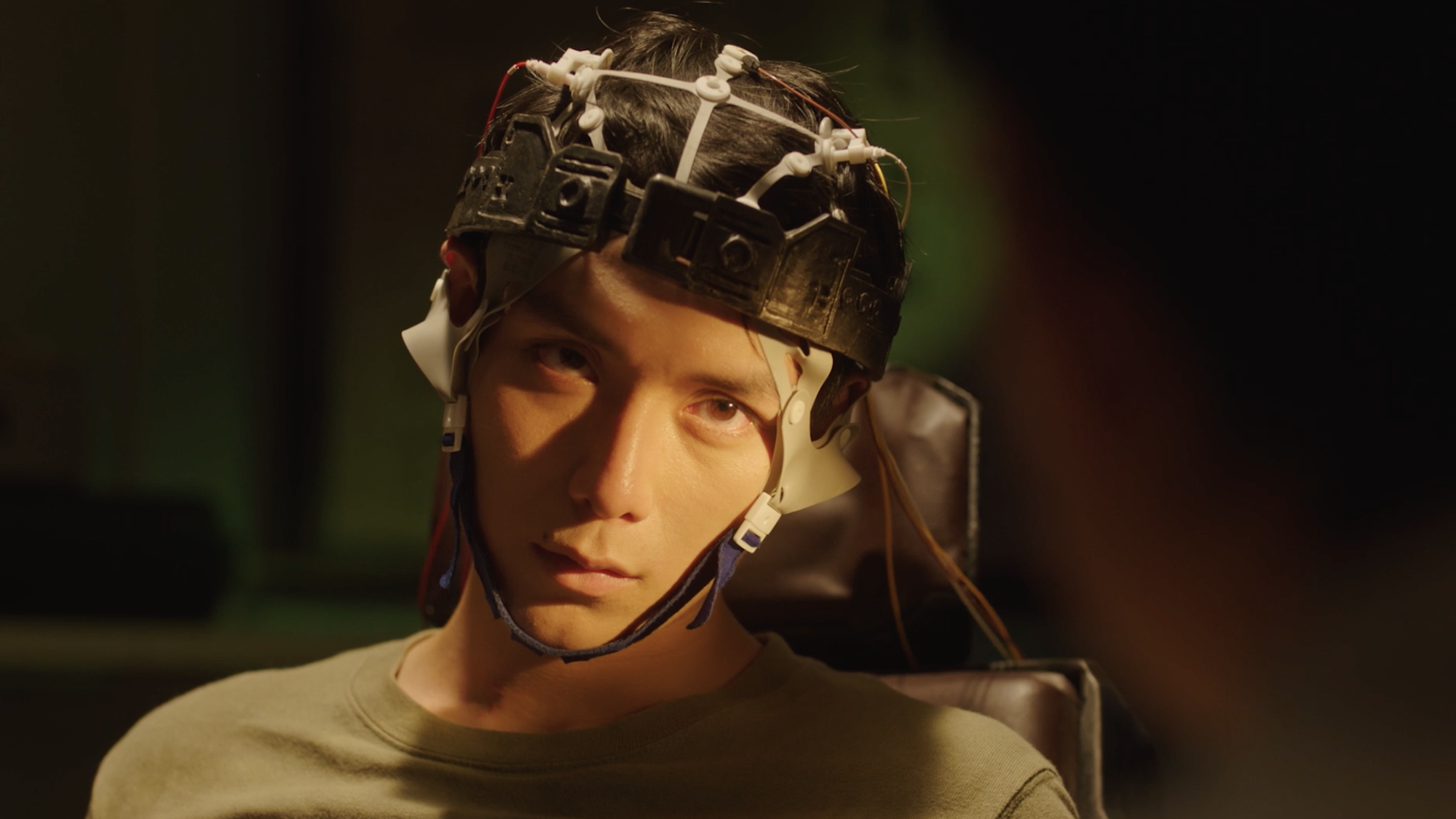
The Cannes Film Festival is one of the biggest yearly events for motion pictures, showcasing the best films from all over the world. But there's another interesting component to the event: Cannes Next, a program focusing on new innovations in filmmaking. Current and aspiring filmmakers can get an early look at the technology and techniques that they may one day use in their own projects.
Part of Cannes Next is what they call the "experiences," what one might call nontraditional films - a category that tends to include some video games. This year, they featured a title I've written about previously: Breakout 13, Chinese developer ALT Lab's interactive film following a young man whose penchant for skipping school to play video games lands him in a behavioral modification center.
This was just the latest piece of good news for ALT Lab. All indications are that Breakout 13 has been doing quite well, especially given that it's a niche title by an unproven developer. However, almost all of that success has come from Asia. Less than 3% of Breakout 13's Steam reviews are in English, suggesting that very few Westerners have had the opportunity to experience it.
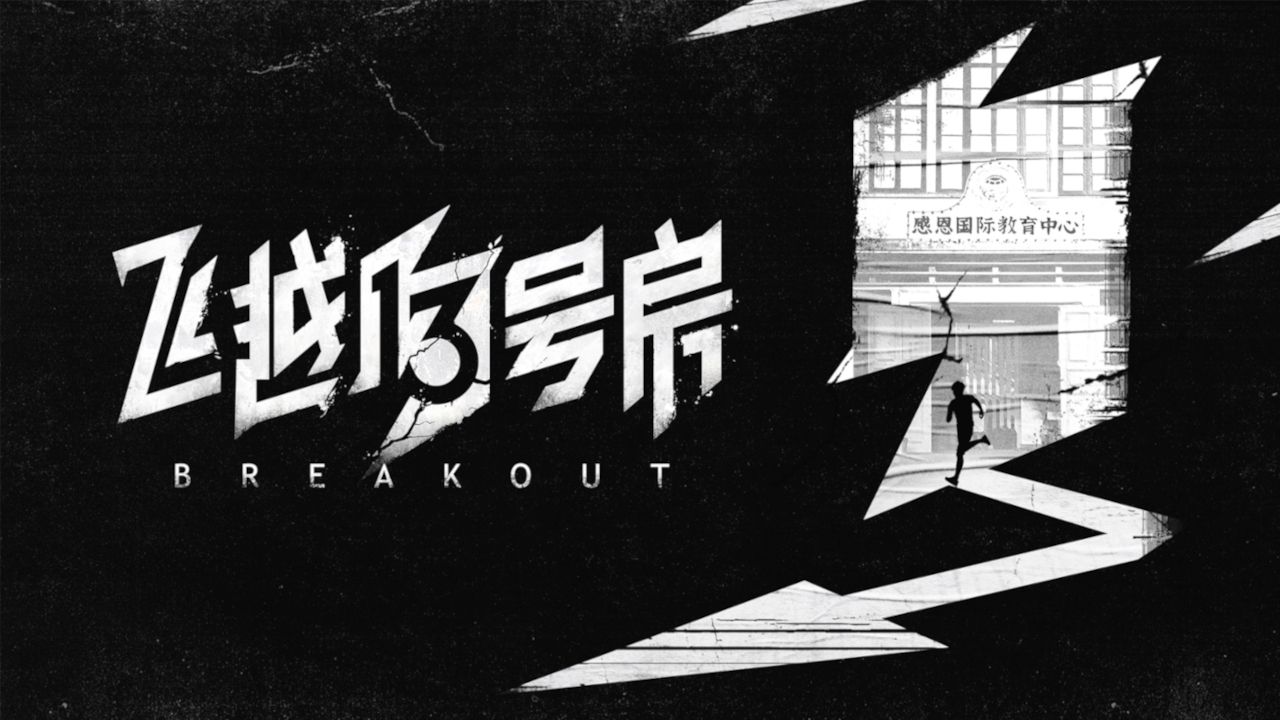
This isn't really a surprise. Breakout 13 has a natural audience in mainland Asia, where people are familiar with the source novel that inspired it as well as the real world people, places and events that inspired the novel. This game was guaranteed to spread quickly across the Chinese internet, which it did. But there was very little marketing elsewhere, despite both the game and much of the supporting material featuring reasonably good quality English translations.
Having finally put the game through its paces, I think there's another issue: Much of what happens in the story is bound to be impenetrable to an audience not familiar with the culture. This can range from little oddities in the dialogue to large portions of the plot that reference things that are obscure outside of Asia.
Let's put it this way: I can safely say that I know a lot more about China and the Chinese people than most Americans, and yet when I wrote the first article on this game in January, I missed a lot. There are errors aplenty in that piece, mostly where the game references specific events. I even missed the significance of the title.
So let's take a closer look at some of those cultural markers. It's probably best to play through the game first and then read this, but if you don't mind some light spoilers, then by all means read on.
Dr. Yang Yongxin and Internet Addiction in China
Breakout 13 is a story about video game addiction. In the past, I've poked some gentle fun at the martyrdom act that some Western internet personalities have put on over the concept of video game addiction, chiefly because it doesn't exist in the West in any meaningful sense. By contrast, it's serious business in Korea and China, and to illustrate this we need to talk about the controversial real world doctor who inspired Principal Yang Yong'en, Breakout 13's villain.
Dr. Yang Yongxin is, among other things, the founder of the Internet Addiction Treatment Center in the Fourth People's Hospital of Linyi City. The Center was popularized by a 2006 book and 2008 documentary which could both be loosely translated as "The Battle Against Internet Demons," a name which - ironically - is very similar to the Chinese name for Battle.net. Dr. Yang's methods were notoriously extreme, including electric shocks (which were conducted in the facility's Room 13) and the use of psychotropic drugs.
As the years passed, people who had been in the Internet Addiction Treatment Center began to speak out. Dr. Yang became an increasingly controversial figure, with many parents still insisting that he was a saint while other people cast him as a brute and a sadist.
In 2009, an unrelated scandal brought the entire concept of treatment for internet addiction into sharp relief. This involved the Nanning Set Sail Training Camp, which purported to treat behavioral problems with military-style discipline and corporal punishment. A young man who had been sent there for internet addiction died after less than a month, leading to investigations revealing serious mistreatment of the students.
The years that followed saw more allegations and lawsuits targeting Dr. Yang and the Internet Addiction Treatment Center. Many of the things now known about the Center came to light due to a 2009 feature by CCTV reporter Chai Jing (who also has a fictional parallel in Jin Kaiying, who appears late in the game). While the report wasn't overtly damning, it was disturbing enough to sway public opinion.
The Center still exists, though Dr. Yang's name is no longer associated with it. Indeed, Dr. Yang largely withdrew from public life almost a decade ago and his current fate is an occasional topic of conversation and rumor on Chinese forums.
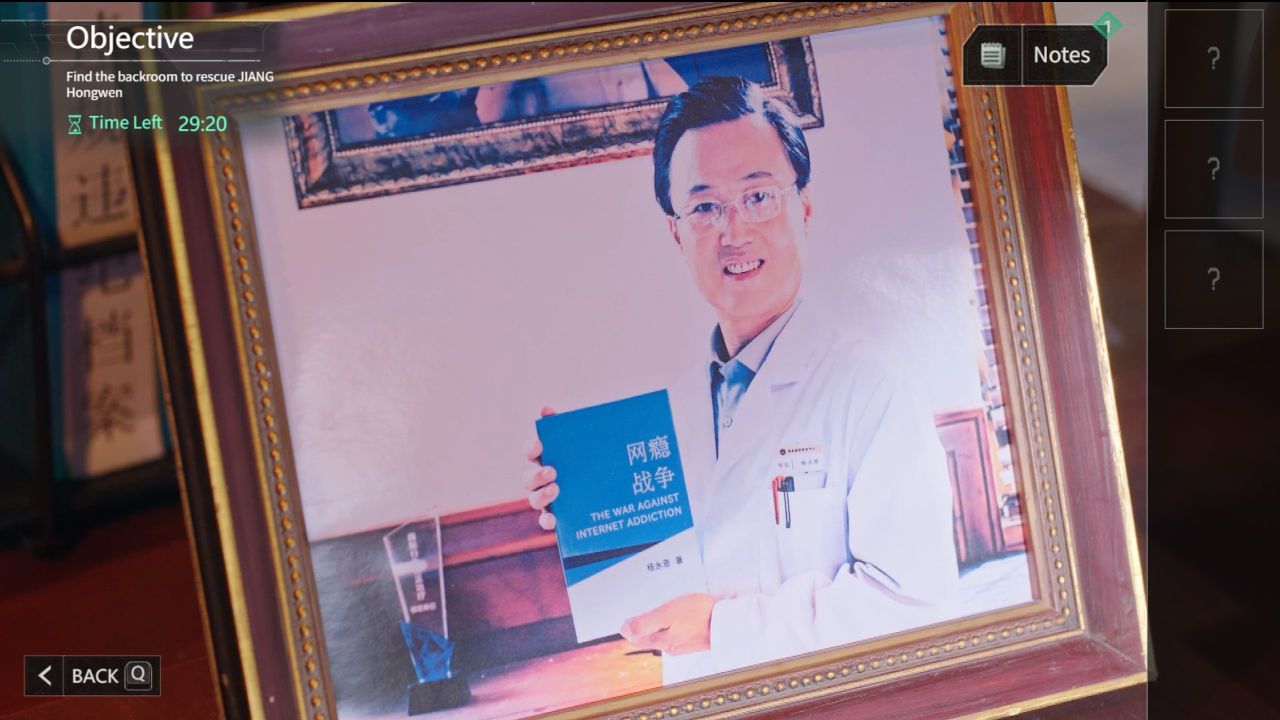
The Gratitude International Education Center (GIEC) is a combination of Dr. Yang's Internet Addiction Treatment Center and the Nanning Set Sail Training Camp, as well as some other similar institutions that were caught up in the scandal. Many of the events in the game are also based on allegations posted online by people who were in such facilities.
The only wrinkle is that the GIEC is located outside of China - but the game is also set in 2010, the year after the scandals started, implying perhaps that Yang Yong'en chose Southeast Asia to avoid scrutiny.
A Brief Aside on Names
Chinese names are often a sticking point for English speakers, so I'd like to take a moment to discuss the names in this particular game.
Chinese dialects have a relatively small number of distinct sounds, something authors have taken advantage of for a long time. Fewer sounds mean lots of homophones, which lends the language to puns and wordplay. Meaningful names - particularly where characters have names similar to each other - have a particularly long history in Chinese literature.
You may notice such a link between the protagonist (Zhang Yang) and the antagonist (Yang Yong'en). The "Yang" is not the same character in each name, but the characters each have the same tone, meaning that they sound the same when spoken aloud. While a bit confusing for an English speaker, this suggests a connection between the two of them.
The villain's name is also almost the same as his real-life counterpart, save the last character. This is perhaps a bit of a joke, as one way to read the fictional character's given name is "forever kind."
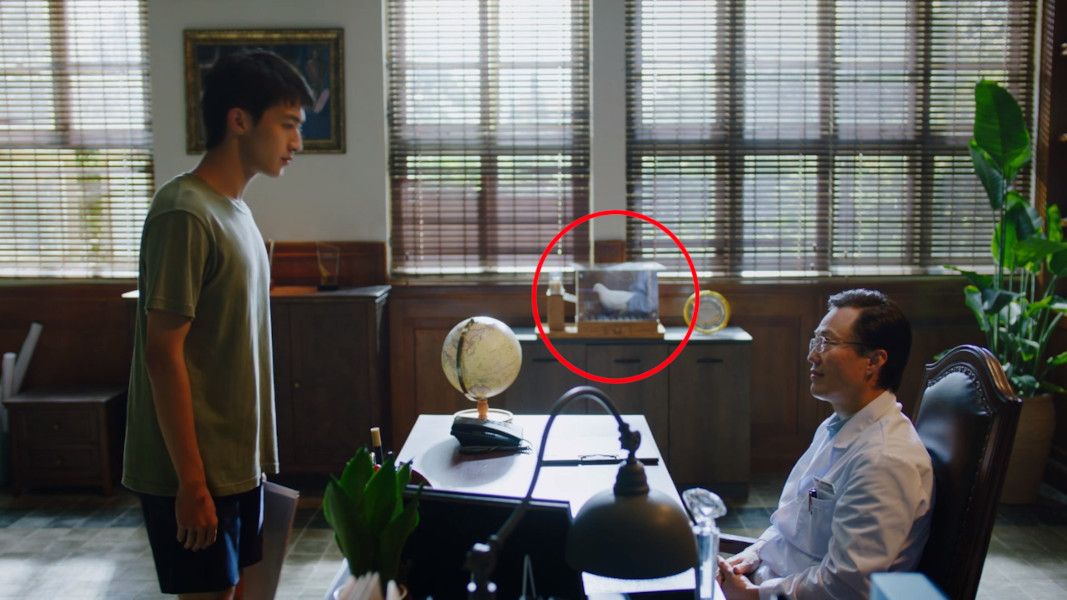
B.F. Skinner's Contribution
I previously referred to the use of shocks in this game as "electroconvulsive therapy" - ECT - which isn't quite right. ECT refers to a specific therapeutic procedure, whereas the use of shocks in Breakout 13 is based more on the work of B.F. Skinner.
Skinner was a behaviorist whose greatest legacy might be creating practical applications for operant conditioning. This includes aversion therapy, the use of negative reinforcement (in this case, the shock) to discourage and ultimately eliminate unwanted behavior. It's a concept that is often misattributed to Ivan Pavlov, a figure much more famous to laypeople. It's not too hard to keep the two separate - when talking about changing a behavior, don't think Pavlov's dog, think Skinner's pigeons.
I mention this because Skinner hangs heavy over this game. It starts with the GIEC itself, which is described as offering "behavior modification" - which, incidentally, was also a euphemism employed in the Internet Addiction Treatment Center after the 2009 report. But Principal Yang's office is also full of references back to Skinner. A sharp-eyed player might notice a model of the famous Skinner box in the background, an object that becomes an important part of a puzzle in one of the end-game branches.

Chinese High Schools and "Puppy Love"
The concept of internet/video game addiction isn't as central to the plot of Breakout 13 as it may seem. The game is pretty agnostic on whether the condition exists or not, and the GIEC is not primarily for treating it. In fact, Zhang Yang is the only student there for such a problem. The other named characters have been sent to the GIEC for a range of other issues - everything from fighting to cheating on tests to simply being what we would call "at risk."
One of the more innocent forms of defiance mentioned in the game is dating. Not dating the wrong person, mind you - someone too old or with a sketchy background - just dating.
This is a significant cultural distinction between the United States in China. In this part of the world, it is standard for teenagers to have romantic relationships, even if they aren't particularly serious. It's seen as just another part of growing up and becoming independent.
When I speak to Chinese classes about American high schools and it comes time to take questions, the first question is always the same: One of the girls will ask "Are you allowed to have a boyfriend?" She asks this because, in China, you are absolutely not allowed to date, even in the most innocent sense. Relationships are widely seen as a distraction from the gaokao, the college entrance exam that decides everyone's post-high school fate. The term "puppy love" doesn't refer to something cute, but to something corrosive that puts a child's future in jeopardy.
It's worth noting that the biggest difference between the GIEC and its real-life analogs is that almost everyone in the GIEC is high school age and the facilities are clearly meant to resemble a high school. This may be a bit of subtle authorial commentary. In the United States, we like to see high school as this time of exploration and self-discovery, which feeds into our "best years of your life" mythos. But when I ask my Chinese students what high school is like, the answer is always a single word: "Prison."
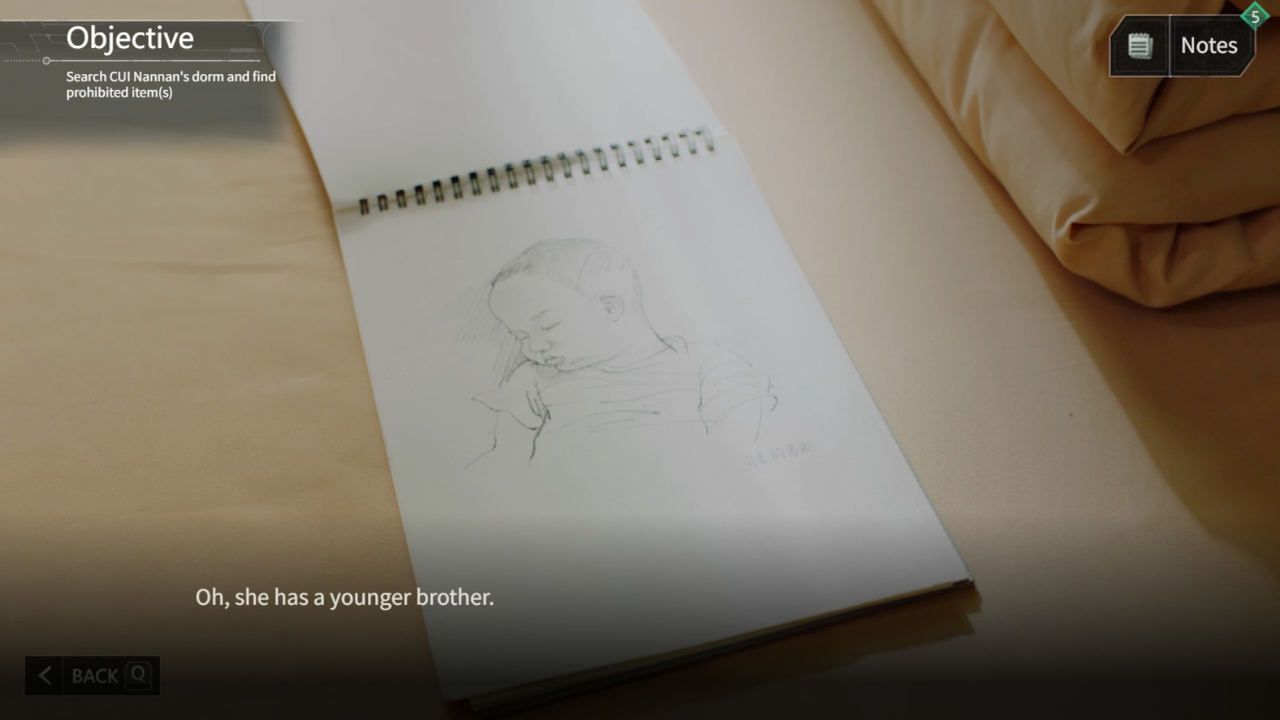
Cui Nannan's Dilemma
As far as that "no dating" rule goes, there's a special case in Cui Nannan. She has been condemned to the GIEC for having a boyfriend, but her situation is a little bit different. There are some minor inconsistencies between what's presented in the actual narrative and what is written in the notes unlocked by completing the game, but I'll treat the game proper as the authoritative source.
Cui Nannan's parents are divorced, something which is true for a few other characters in the game, most notably Zhang Yang. This is part of an argument that the game makes at various points - that the problems facing the students are more due to family issues than Skinnerian behavioral problems. While Zhang Yang's mother remains unattached, Cui Nannan's father has remarried and has another son.
This is where we have to touch upon the sticky subject of male preference.
Traditionally, when a Chinese woman married, she left her family and became part of her husband's family, obliging her to take care of them. Traces of this can be seen in the titles given to one's in-laws, which are different for husbands and wives. A man's in-laws are designated by the character "wai," indicating "outside" - they are not really part of the family.
Cui Nannan's father and stepmother have slightly different expectations - they want her to take care of her half-brother, and part of that is that is marrying money. Her having a boyfriend isn't a problem because it distracts from tests, but because he isn't rich and prestigious enough. Her confinement to the GIEC is more about keeping her isolated until she makes the "right" choice.
It's here that I have to plead ignorance, as I have no idea if this is an actual phenomenon. There's no question that, in the wake of the PRC relaxing the One-Child Policy, a lot of teenagers now have younger siblings, something that has complicated family life. Whether that has resulted in such drastic problems is a question for another time.
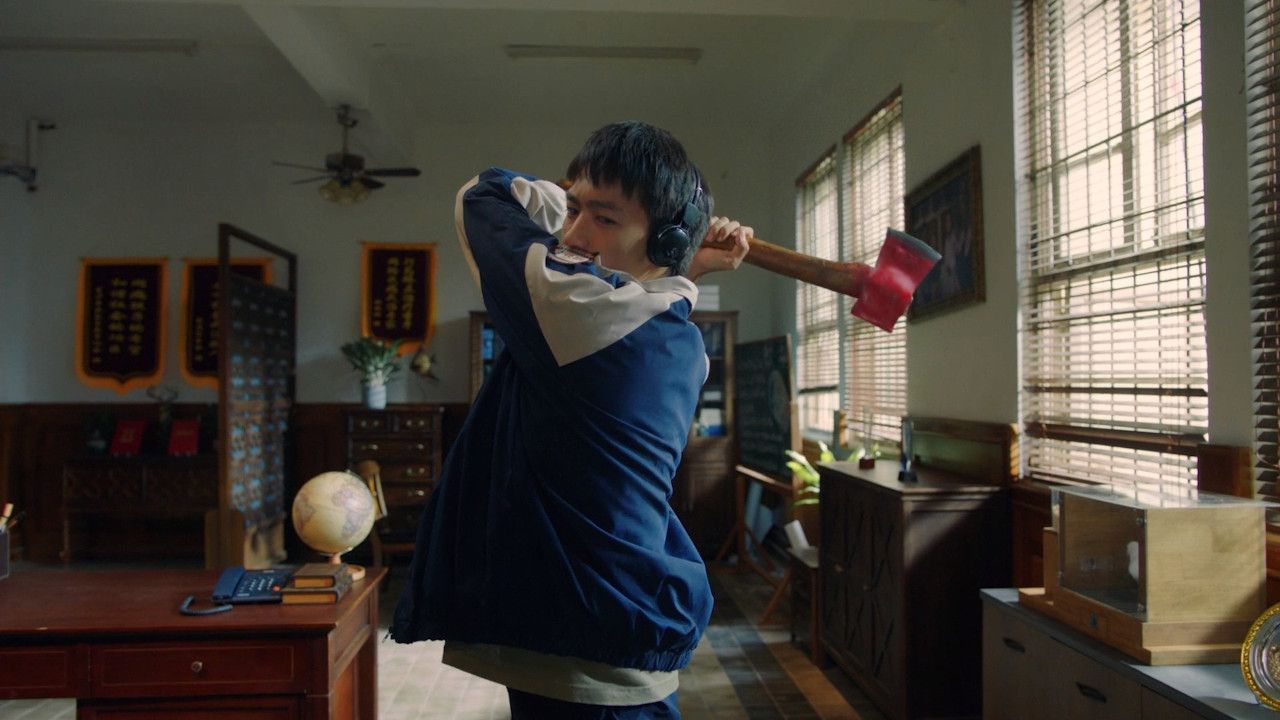
Time To Break Out
Were I of a mind to do so, I could ramble on here for a few thousand more words. I could go into each character and the archetypes they represent in a story like this. I could pull out a dozen screenshots and point out all the little details that mark this as a story about a Chinese high school - everything from red banners to two-person desks. And if I really wasn't afraid of spoiling the entire thing, I could give you a list of all the scenes that are recreations of things that allegedly happened in real life.
Some things are better left for the audience to discover, though. The complete game is available for less than $20, and if you opt to experience it for yourself, why not leave a review?
